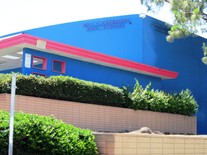
Will C. Crawford Alumni Association & Foundation

Coronado
Please enjoy these photographs of Coronado including the Hotel Del Coronado and historic Tent City.
A Brief History:
Flat and treeless, Coronado was home to mostly jackrabbits and quail when Elisha Babcock and Hampton Story decided to build a seaside resort community. For $110,000 in 1886, the Midwestern investors purchased the land, laid out lots, planted trees, and built a water system and power plant. Their subsequent land auction fetched prices of $500 to $1600 per lot, recouping the men’s investment and gaining them the capital for building a resort that would be the “talk of the Western world.”
On January 12, 1887, the fast-track construction project began, with laborers working around the clock. The first official guests checked in a year later. Built entirely of wood and completed at a cost of $1 million, the Hotel del Coronado, designed in the Queen Anne Revival style with its whimsical turrets and asymmetrical design, is one of the few Victorian seaside resorts still standing.
The hard times of the 1890′s depression brought sugar magnate John D. Spreckels into the picture. He fell in love with “The Del” and became the sole proprietor by 1892. He built a grand mansion across the street on Glorietta Boulevard and established Tent City south along the strand. Tent City, with bathing facilities, carnival booths, a Ferris Wheel and dance pavilion, appealed to the emerging middle class who couldn’t afford the hotel. Unlike the hotel’s ‘season’ of attracting visitors from cold climates in the winter, Tent City drew a summer crowd from hot inland California and Arizona – a pattern that continues today. Tent City flourished until 1939.
Spreckels sold ‘North Island’ to the US government in 1917, and the US Army, Marines, and the Navy made it home. North Island was the site for the first seaplane flight, the first mid-air refueling and the first non-stop transcontinental flight. Charles Lindbergh flew from North Island on the first leg of his celebrated New York to Paris flight in 1927.
The relaxed Coronado way of life changed forever in 1969 when, over protests from many residents, the bridge to San Diego opened and replaced the automobile ferries. The influx of thousands of daily vehicles prompted Coronado’s first traffic signals. But the heritage of planned development, begun by Babcock and Story, has been upheld, preserving the vibrant quality of the residential streets and the business community.
Links:
Coronado Historical Association

















